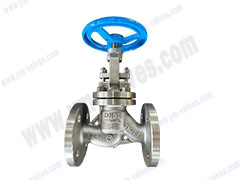-
Basic Principles of Valve Sealing Surface Grinding
-
The basic principle of valve sealing surface grinding is to eliminate microscopic defects such as unevenness, scratches, and corrosion on the sealing surface through mechanical friction and material removal, achieving a highly flat, smooth surface that fits tightly against the mating sealing surface. This ensures the valve effectively prevents media leakage when closed.
1. Surface Smoothing Principle
Elimination of Microscopic Defects: During manufacturing, use, or maintenance, valve sealing surfaces may develop microscopic defects such as scratches, pits, and corrosion points. Grinding gradually removes these defects through the micro-cutting action of abrasive particles, achieving macroscopic flatness of the sealing surface.
Reduction of Surface Roughness: During grinding, abrasive particles continuously cut the sealing surface under pressure, smoothing out rough peaks and valleys, ultimately forming a smooth surface. Typically, the roughness of the ground sealing surface can reach below Ra 0.2μm, meeting sealing requirements.
2. Shape Accuracy Restoration Principle
Geometric Shape Correction: Valve sealing surfaces may experience shape deviations (such as excessive taper or roundness) due to wear, deformation, or machining errors. Grinding involves matching the shape of customized grinding tools (such as grinding discs and grinding rods) to the sealing surface, gradually correcting shape errors during the grinding process to restore the geometric accuracy required by the design.
Coaxiality and Perpendicularity Control: For gate valves and globe valves, the coaxiality or perpendicularity of the sealing surface directly affects sealing performance. During grinding, precise positioning and uniform force are used to ensure the symmetry of the sealing surface and the valve body centerline.
3. Contact Surface Optimization Principle
Contact Width Adjustment: The effective contact width of the sealing surface is a key parameter affecting sealing performance. Grinding controls the amount of grinding to ensure the contact width reaches the design range (e.g., 1.5-3mm for soft-seal valves, and wider for hard-seal valves), ensuring a uniform contact band is formed on the sealing surface under pressure.
Surface Hardness Enhancement: Some grinding processes (such as ultra-precision grinding) can form a hardened layer on the surface, improving the wear resistance and corrosion resistance of the sealing surface and extending its service life.
4. Material Removal and Surface Modification Principles
Abrasive Cutting Action: Abrasive particles (such as alumina and silicon carbide) in the grinding fluid micro-cut the sealing surface under pressure, removing excess material. The smaller the abrasive particle size, the finer the cutting marks and the higher the surface quality.
Chemical Auxiliary Action: Adding chemical components (such as lubricants and corrosion inhibitors) to some grinding fluids can reduce frictional heat, prevent surface oxidation, and promote uniform distribution of abrasive particles, improving grinding efficiency.
5. Matching Principle of Paired Sealing Surfaces
Mutual Polishing Process: For sealing surfaces that need to be paired (such as valve seats and valve discs), a mutual polishing method is used: the valve seat is fixed, and the valve disc is rotated for polishing; or vice versa. Through repeated polishing, the microscopic protrusions of the two sealing surfaces match each other, forming a tight "mirror-to-mirror" contact.
Smoothness Consistency: During the mutual polishing process, the roughness and shape accuracy of the two sealing surfaces are improved simultaneously, ensuring uniform distribution of contact pressure when closed and avoiding localized leakage.
6. Pressure and Motion Control Principles
Pressure Distribution Optimization: During grinding, the grinding pressure is controlled by a pressurizing device (such as a spring or hydraulic pressure) to ensure uniform force on all parts of the sealing surface and avoid localized overload leading to deformation.
Motion Trajectory Design: The motion trajectory of the grinding tool (such as rotation, oscillation, or linear reciprocating motion) affects surface quality. For example, planetary grinding can achieve uniform coverage and avoid missing areas.




.jpg)
.jpg)
.jpg)